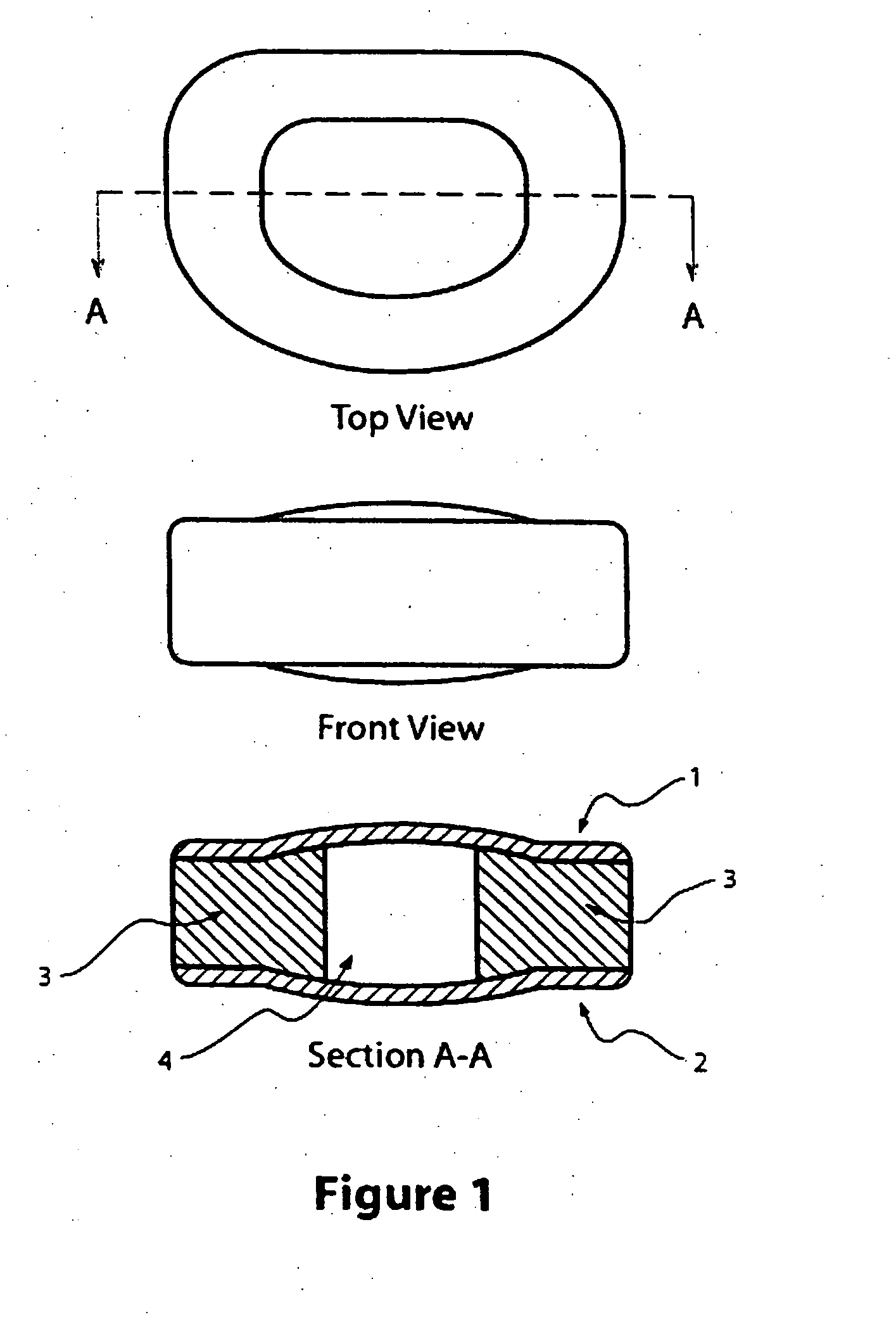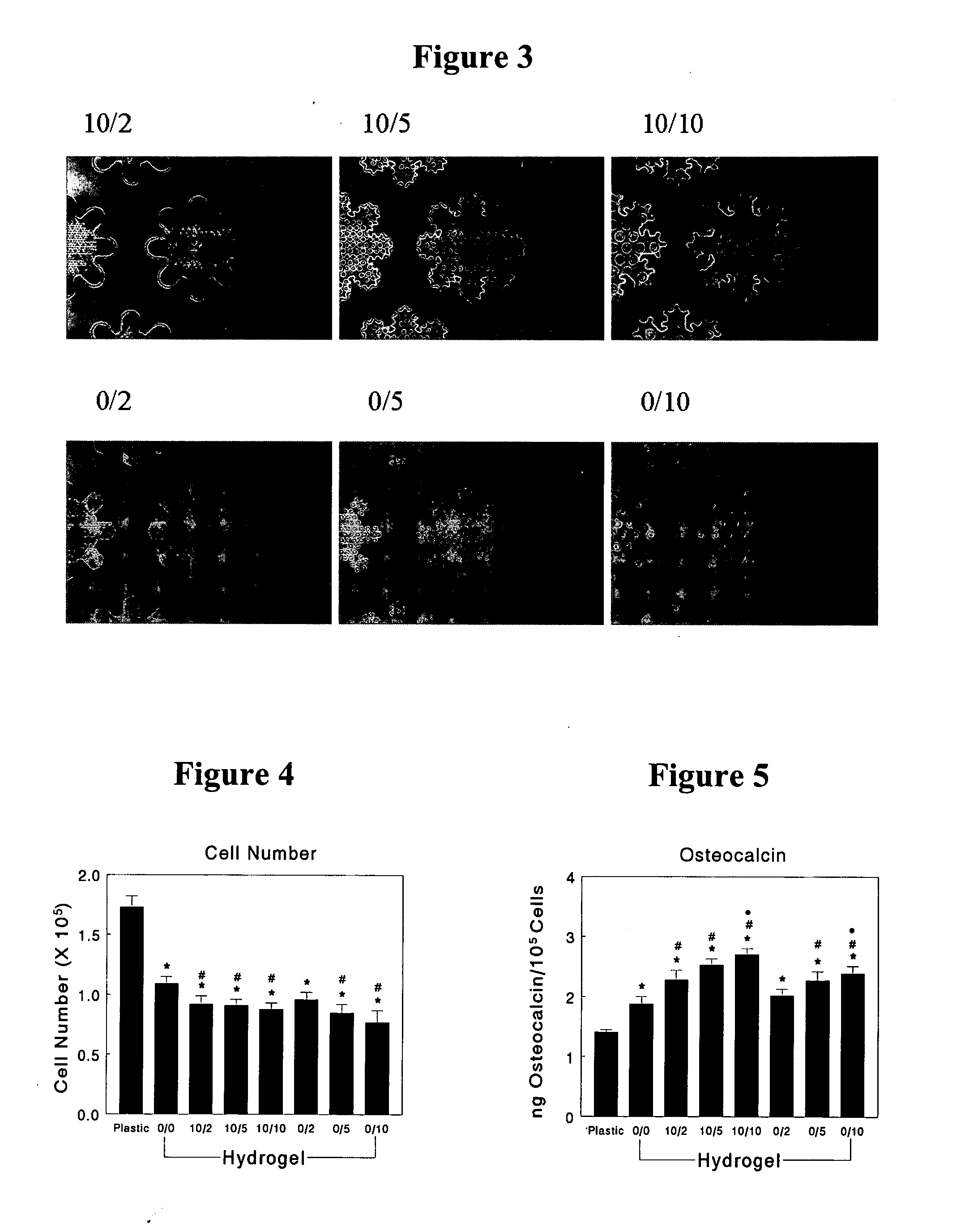Surface directed cellular attachment
- Summary
- Abstract
- Description
- Claims
- Application Information
AI Technical Summary
Benefits of technology
Problems solved by technology
Method used
Image
Examples
example 1
[0067] A simple mold surface pattern in accordance with this invention, for example, is an array of cylinders which are 5 μm in diameter and 5 μm in height. To construct a mold surface with this pattern, a 4-inch diameter silicon wafer is coated with a 5 μm thick layer of SU-8 2005 by spin coating at 3000 rpm for about 30 seconds. The wafer is then placed on a hotplate at 65° C. for about 1 minute and then at 95° C. for about 2 minutes. The wafer is then exposed to UV light through a photomask defining the array of cylinders using, for example, a mask aligner (Karl Suss MA-6). The exposure time is calculated to give an exposure energy of 75 mJ / cm2 at a wavelength of 365 nm. The exposed areas of the photoresist are then crosslinked by heating the wager on a hotplate at 65° C. for about 1 minute and then at 95° C. for about 1 minute. The unexposed areas of the photoresist are then dissolved away by immersing the wafer in solvent (SU-8 Developer, MicroChem, Newton, Mass.) for about 1 m...
example 2
[0068] A more complicated pattern for a hydrogel mold surface, in accordance with the present invention when generated could for example, consist of an array of cylinders 100 μm in diameter and 100 μm in height. Each cylinder is topped with a smaller array of cylinders, 5 μm in diameter, and 5 μm in height. The construction of such a mold requires two layers of photoresist and two separate exposures of those layers. First, a 4-inch diameter silicon wafer is coated with a 100 μm thick layer of SU-8 2050 by spin coating at 1700 rpm for about 30 seconds. The wafer is then placed on a hotplate at 65° C. for about 4 minutes and then at 95° C. for about 1 minute. The wafer is then exposed to UV light through the photomask defining the array of large cylinders, using, for example, a mask aligner (Karl Suss MA-6). The exposure time is calculated to give an exposure energy of 450 mJ / cm2 at a wavelength of 365 nm.
[0069] The exposed areas of the photoresist are then cross-linked by heating th...
example 3
[0070] Under the methods of this invention, enhanced differentiation of cells into bone or bone-like cells is seen. Specifically, experiments were run using the PVA-H of this invention in multiple forms. This description references FIGS. 3-5 for clarity. As shown in FIG. 3 there were seven conformations of the surface topography taught by this invention used in this experiment—one being smooth hydrogel. Specifically, conformation is described using a two number nomenclature system such as PVA-H 10 / 2. PVA-H 10 / 2 refers first to the size of the large pore on the surface. As described above, the large pore can exist in a complex structure resembling a snowflake. The number 10 in the first position represents a large pore of 100 μm in diameter. The number in the second position of the nomenclature system refers to the size and arrangement of the small pores superimposed on the large pore surface. The second position numbers of 2, 5, and 10 refer to a diameter of 2 μm, 5 μm, and 10 μm, r...
PUM
| Property | Measurement | Unit |
|---|---|---|
| Length | aaaaa | aaaaa |
| Length | aaaaa | aaaaa |
| Length | aaaaa | aaaaa |
Abstract
Description
Claims
Application Information
 Login to View More
Login to View More - R&D
- Intellectual Property
- Life Sciences
- Materials
- Tech Scout
- Unparalleled Data Quality
- Higher Quality Content
- 60% Fewer Hallucinations
Browse by: Latest US Patents, China's latest patents, Technical Efficacy Thesaurus, Application Domain, Technology Topic, Popular Technical Reports.
© 2025 PatSnap. All rights reserved.Legal|Privacy policy|Modern Slavery Act Transparency Statement|Sitemap|About US| Contact US: help@patsnap.com



